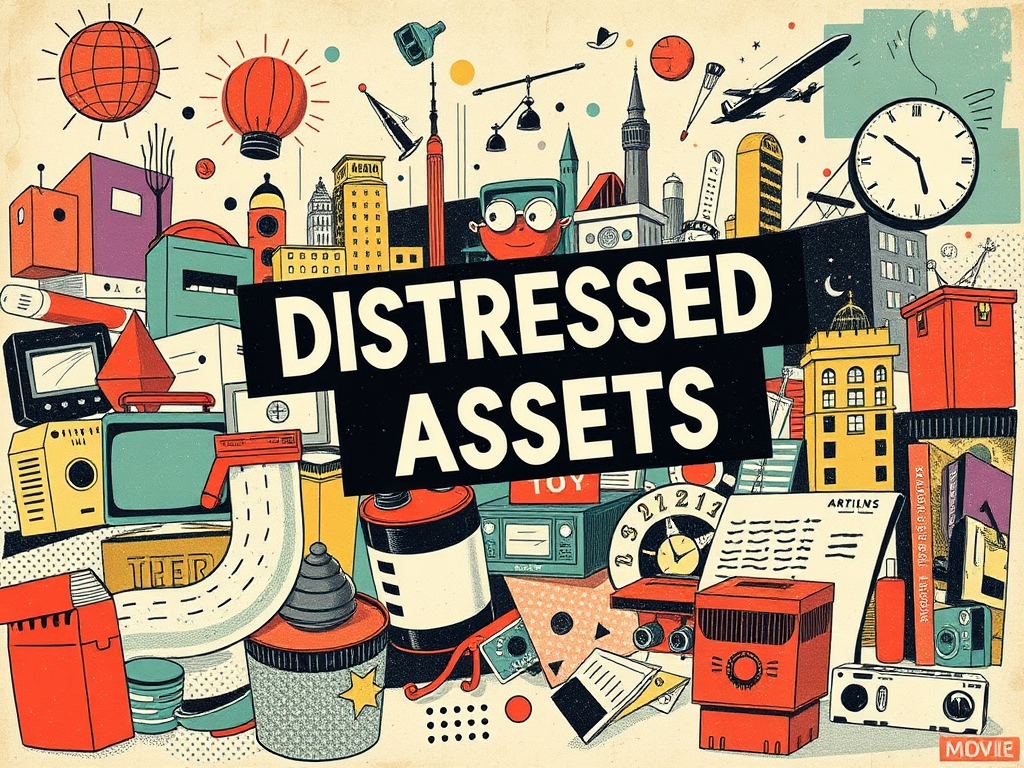
Buying Distressed Assets: Opportunities from Greece’s Past Crisis (NPLs, etc.)
Reading time: 15 minutes
Table of Contents
- Introduction
- Understanding Greece’s Economic Crisis
- The Rise of Non-Performing Loans (NPLs)
- Opportunities in Distressed Assets
- Real Estate Market Dynamics
- Investment Strategies for Distressed Assets
- Risks and Challenges
- Future Outlook
- Conclusion
- FAQs
Introduction
The Greek economic crisis, which reached its peak in the early 2010s, left an indelible mark on the country’s financial landscape. While the immediate aftermath was characterized by economic turmoil and uncertainty, the crisis also created unique investment opportunities, particularly in the realm of distressed assets. This comprehensive analysis delves into the intricacies of Greece’s economic recovery, focusing on the opportunities that have emerged from the country’s past crisis, with a particular emphasis on Non-Performing Loans (NPLs) and other distressed assets.
Understanding Greece’s Economic Crisis
To fully grasp the current investment landscape, it’s crucial to understand the origins and progression of Greece’s economic crisis. The crisis, which began to unfold in late 2009, was triggered by a combination of factors, including high government debt, structural inefficiencies, and external economic shocks.
Key Factors Contributing to the Crisis
- Excessive government borrowing
- Lack of competitiveness in key industries
- Global financial crisis of 2008
- Structural inefficiencies in the Greek economy
The crisis led to severe austerity measures, multiple bailouts from international creditors, and a significant contraction of the Greek economy. GDP declined by over 25% between 2008 and 2016, unemployment soared to record levels, and the country’s banking sector faced unprecedented challenges.
The Rise of Non-Performing Loans (NPLs)
One of the most significant consequences of the economic crisis was the exponential growth of Non-Performing Loans (NPLs) in the Greek banking system. NPLs are loans where the borrower has failed to make scheduled payments for an extended period, typically 90 days or more.
NPL Statistics and Trends
At the height of the crisis, NPLs in Greece reached alarming levels:
- NPL ratio peaked at over 45% in 2016
- Total volume of NPLs exceeded €100 billion
- Residential mortgages, consumer loans, and business loans were all severely affected
This unprecedented level of NPLs posed a significant threat to the stability of the Greek banking sector and hindered economic recovery. However, it also created a unique opportunity for investors willing to navigate the complexities of the distressed asset market.
Opportunities in Distressed Assets
The high volume of NPLs and other distressed assets in Greece has attracted considerable interest from both domestic and international investors. These assets, often available at significant discounts to their intrinsic value, present compelling opportunities for those with the right expertise and risk appetite.
Types of Distressed Assets Available
- Non-Performing Loans (NPLs)
- Real estate owned (REO) properties
- Distressed businesses and corporate debt
- Government-owned assets slated for privatization
Investors have employed various strategies to capitalize on these opportunities, including direct purchases of NPL portfolios, participation in asset management companies, and investments in real estate assets backing non-performing loans.
Real Estate Market Dynamics
The real estate sector in Greece has been particularly affected by the economic crisis and the subsequent rise in NPLs. This has created a unique landscape for property investors, with opportunities emerging across various segments of the market.
Key Real Estate Trends
- Significant price corrections in both residential and commercial properties
- Increased availability of distressed properties through foreclosures and auctions
- Growing interest in Greek real estate from international investors
- Gradual recovery in prime locations and tourist-oriented properties
For those interested in exploring the Greek real estate market, there are numerous options for property for sale greece, ranging from distressed assets to high-end developments in sought-after locations.
Investment Strategies for Distressed Assets
Investing in distressed assets requires a nuanced approach and a deep understanding of the local market dynamics. Successful investors in this space have employed a variety of strategies to maximize returns while managing risks.
Common Investment Approaches
- Direct acquisition of NPL portfolios from banks
- Participation in joint ventures with local partners
- Investment in specialized funds focusing on Greek distressed assets
- Acquisition of individual properties through auctions or private sales
Each of these strategies comes with its own set of advantages and challenges. Direct acquisition of NPLs, for instance, offers the potential for significant returns but requires specialized expertise in loan servicing and workout strategies. On the other hand, investing in individual properties may be more accessible but requires careful due diligence and local market knowledge.
Risks and Challenges
While the opportunities in Greek distressed assets are significant, it’s crucial to understand and mitigate the associated risks. Investing in this market requires careful consideration of various factors that could impact investment performance.
Key Risk Factors
- Legal and regulatory complexities
- Macroeconomic uncertainties
- Potential for political instability
- Challenges in asset valuation and price discovery
- Operational difficulties in managing distressed assets
Successful investors in this space have typically developed robust risk management strategies, often partnering with local experts to navigate the complexities of the Greek market. Due diligence is paramount, as is a thorough understanding of the legal and regulatory environment governing distressed asset investments in Greece.
Future Outlook
As Greece continues its economic recovery, the landscape for distressed asset investments is evolving. While the volume of NPLs has decreased significantly from its peak, opportunities remain for astute investors.
Key Trends to Watch
- Ongoing efforts by Greek banks to reduce NPL ratios
- Increasing interest from international investors
- Potential for further reforms to streamline the investment process
- Gradual recovery in property values, particularly in prime locations
The future of distressed asset investments in Greece will likely be characterized by increased competition and a gradual normalization of the market. However, for investors with the right expertise and approach, significant opportunities are likely to persist in the medium term.
Conclusion
The Greek economic crisis, while devastating in its immediate impact, has created a unique set of opportunities for investors in distressed assets. From Non-Performing Loans to undervalued real estate, the Greek market offers a diverse range of investment possibilities for those willing to navigate its complexities.
As the country continues its economic recovery, the landscape for distressed asset investments is evolving. While some of the initial opportunities may have passed, new ones are emerging as the market matures and reforms take effect. For investors considering this market, a combination of local expertise, thorough due diligence, and a long-term perspective will be crucial to success.
The story of distressed assets in Greece is not just about financial opportunities; it’s also about participating in the economic rejuvenation of a country with a rich history and significant potential. As Greece moves forward, the strategic deployment of capital into distressed assets could play a vital role in supporting the country’s ongoing economic recovery and transformation.
FAQs
1. What are Non-Performing Loans (NPLs), and why are they significant in the Greek context?
Non-Performing Loans are loans where the borrower has failed to make scheduled payments for an extended period, typically 90 days or more. In Greece, NPLs became particularly significant during the economic crisis, reaching over 45% of total loans in 2016. This high level of NPLs posed a major challenge to the banking sector but also created investment opportunities for those willing to acquire and manage these distressed assets.
2. How can international investors participate in the Greek distressed asset market?
International investors can participate in several ways, including direct acquisition of NPL portfolios from Greek banks, investment in specialized funds focusing on Greek distressed assets, participation in joint ventures with local partners, or acquisition of individual properties through auctions or private sales. Each approach requires different levels of expertise and capital commitment.
3. What are the main risks associated with investing in Greek distressed assets?
Key risks include legal and regulatory complexities, macroeconomic uncertainties, potential for political instability, challenges in asset valuation, and operational difficulties in managing distressed assets. Successful investment requires thorough due diligence, local market knowledge, and robust risk management strategies.
4. How has the Greek real estate market been affected by the economic crisis and the rise of NPLs?
The Greek real estate market experienced significant price corrections across both residential and commercial properties. This led to increased availability of distressed properties through foreclosures and auctions. However, recent years have seen gradual recovery, particularly in prime locations and tourist-oriented properties, attracting growing interest from international investors.
5. What is the future outlook for distressed asset investments in Greece?
While the volume of NPLs has decreased from its peak, opportunities remain for astute investors. The market is likely to see increased competition and gradual normalization. Key trends to watch include ongoing efforts by Greek banks to reduce NPL ratios, increasing interest from international investors, potential for further reforms, and gradual recovery in property values, especially in prime locations.







